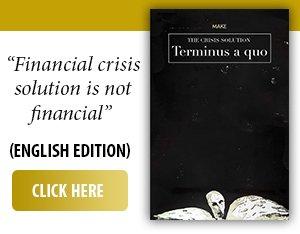După jumătate de secol în care a fost închisă, iniţial sub regimul Germaniei Naziste şi apoi sub cel comunist, bursa din Praga a renăscut în primăvara anului 1993 când, cu susţinerea guvernului francez, tranzacţionarea s-a reluat în capitala Cehiei.
Originile pieţei pragheze moderne sunt legate de schema de privatizare în masă prin cupoane, ce a constituit elementul central al reformei economice a guvernului de la Praga de la începutul şi mijlocul anilor "90. Practic, bursa a luat fiinţă, în mod formal, la finalul primului val de privatizări din Cehia, proces ce a implicat ca toate companiile privatizate să fie listate obligatoriu la bursă, după cum se arată în articolul "Determinants of Firm Delisting on the Prague Stock Exchange" (vezi Notă).
• Valurile de listări şi delistări de la Bursa din Praga
A fost pur şi simplu o decizie administrativă, care a ignorat cerinţele de listare, astfel încât companii care în condiţii normale ar fi preferat să rămână în afara pieţei au ajuns automat publice. Astfel, din aprilie şi până în iulie 1993 au fost listaţi 622 de emitenţi, iar ulterior încă 333 de companii din primul val de privatizări au venit în piaţă. După al doilea val de privatizări, numărul emitenţilor listaţi a crescut şi mai mult, ajungând la aproape 1.800 (n.r. probabil atât la bursa din Praga cât şi pe RM-System, a doua bursă din Cehia) în 1996, iar capitalizarea companiilor listate atinsese 31,3% din PIB, mai mult decât în orice altă economie aflată în tranziţie. Dar, era o piaţă relativ netransparentă şi o mare parte a tranzacţiilor se făceau în afara sistemului bursier, după cum reiese din lucrare.
Începând cu 1997 a demarat un proces invers, bursa din Praga începând să joace un rol activ în delistarea companiilor de la propria cotă. Au fost patru valuri masive de delistări, prin care circa 1.300 de companii au ieşit de la bursă, fiind vorba în principal de companii foarte mici, care oricum nu îndeplineau criteriile de listare, notează autorii. Ulterior, frecvenţa delistărilor s-a redus, dar cum listările au fost sporadice, numărul companiilor de la Bursa de Valori din Praga (PSE) s-a tot diminuat de-a lungul timpului. De altfel, autorităţile din Cehia nu au mai folosit piaţa de capital pentru a privatiza companii din anii "90, după cum ne-a spus Petr Koblic, directorul general al bursei pragheze.
Chiar dacă majoritatea covârşitoare a emitenţilor listaţi atunci într-un mod forţat nu mai sunt acum în piaţă, iar demersul nu a dat roadele aşteptate, după cum reiese din articolul mai sus menţionat, câteva companii ce au fost introduse în piaţă prin procesul privatizării în masă se găsesc acum la bursa din Praga, cele mai bune exemple fiind gigantul energetic Èeske Energeticke Zavody (ÈEZ) şi instituţia de credit Komerèní Banka.
• Piaţă emergentă în ierarhia MSCI şi emergentă avansată conform FTSE Russell
Astăzi, piaţa de capital din Cehia este emergentă avansată în ierarhia FTSE Rusell (unde noi abia am intrat în categoria emergentă secundară) cu o pondere de 0,12% în FTSE Emerging Index (faţă de 0,04% cât este ponderea României), şi emergentă conform MSCI (clasament în care piaţa noastră este în categoria celor de frontieră). Anul trecut, ponderea capitalizării companiilor locale în PIB era de 10,9%, conform datelor Băncii Mondiale, cu puţin peste cea a României, de 10,3%, dar cu mult sub nivelul Poloniei, cea mai dezvoltată piaţă din zona noastră, care avea un raport capitalizare faţă de PIB de 29,9%.
La finele lunii mai a acestui an, capitalizarea bursieră a companiilor locale listate la bursa din Praga era de 26,4 miliarde de euro, conform datelor Federaţiei Europene a Valorilor Mobiliare (FESE), puţin peste cea a companiilor din Piaţa Reglementată de la Bursa de Valori Bucureşti (BVB), de 24,3 miliarde de euro.
• Pondere de aproape 40% a sectorului financiar în indicele PX
PX este principalul indice al bursei din pragheze, fiind în prezent compus din acţiunile a treisprezece companii locale şi străine. Acţiunile companiei de securitate cibernetică Avast, ce sunt listate şi la Londra, au o pondere de 24,8% în coşul de acţiuni, la finele săptămânii trecute, cele ale ÈEZ de 18,6%, în timp ce titlurile Erste Group Bank, listate secundar la Praga, au o pondere de 17,4%. Domeniul cel mai bine reprezentat în indice, cu o importanţă de peste 38,3%, este cel financiar, pe lângă Erste din coşul de acţiuni mai făcând parte două bănci importante din Cehia (Komerèní Banka şi Moneta Money Bank). De asemenea, există indicele PX-TR, ce reflectă şi dividendele plătite de companiile ce fac parte din coşul de acţiuni şi PX-TRnet, ce este o variantă a indicelui PX-TR ajustat cu impozitele.
• Wiener Börse - proprietarul Bursei din Praga
Bursa din Praga şi subsidiarele sale formează Grupul PX, pilonul de bază al pieţei de capital din Cehia. În afară de bursă, cel mai important membru al Grupului este Depozitarul Central din Praga, ce are o poziţie dominantă în ceea ce priveşte decontarea tranzacţiilor realizate în piaţa de capital cehă. De asemenea, bursa din Praga controlează Energy Clearing Counterparty, entitate ce funcţionează drept contraparte pentru tranzacţiile cu energie din Cehia. PX Group mai colaborează cu Power Exchange Central Europe (PXE), platformă de tranzacţionare a energiei electrice şi gazelor naturale, ce oferă produse şi servicii în Estul Europei şi în Balcani. PXE, la care bursa din Praga deţine 33%, este parte a grupului European Energy Exchange, cea mai mare bursă de energie din Europa.
Bursa de Valori din Praga este deţinută în proporţie de 99,54% de Wiener Börse, iar activităţile bursei, precum şi a întregii pieţe de capital din Cehia, sunt supravegheate de Banca Naţională.
De menţionat că în Cehia mai există o bursă, RM-System Czech Stock Exchange, unde se tranzacţionează acţiuni locale şi străine, platforma adresându-se îndeosebi investitorilor mici şi mijlocii.
În ceea ce priveşte industria fondurilor de investiţii din Cehia, conform declaraţiilor lui Petr Koblic, valoarea totală a activelor administrate de instituţiile locale este de 1,7 trilioane de coroane cehe, circa 68 miliarde de euro, dar cea mai mare parte este investită de fondurile de pensii în obligaţiuni de stat.
Potrivit datelor centralizate de noi din ultimele rapoarte ale Asociaţiei Pieţei de Capital din Cehia (AKAT-ÈR), la finele primului trimestru din 2019, valoarea investiţiilor persoanelor fizice şi instituţiilor în fonduri locale şi străine din Cehia, ceea ce nu include fondurile de pensii, era de 19,81 miliarde de euro, cu circa 8% mai mare decât cea de la 31 decembrie 2018. Aproximativ şapte miliarde de euro se găseau în fonduri mixte, 4,33 miliarde euro în fonduri de acţiuni şi 4,96 miliarde de euro în fonduri de obligaţiuni, conform datelor AKAT.
• Statul vrea să crescă importanţa pieţei de capital în finanţarea economiei cehe
Ca în toate ţările din Europa Centrală şi de Est, economia din Cehia se bazează pentru finanţare în primul rând pe sistemul bancar, bursa jucând un rol minor. Prin Strategia Naţională pentru Dezvoltarea Pieţei de Capital din Republica Cehă pentru perioada 2019-2023, elaborată de Ministerul Finanţelor, statul îşi propune modificarea parţială a structurii surselor de finanţare a companiilor locale, astfel încât piaţa de capital să capete un rol mai important. Strategia include 27 de măsuri pentru eficientizarea pieţei, ceea ce evident implică creşterea capitalizării bursei, a lichidităţii, schimbarea ponderii finanţării companiilor locale către surse nebancare şi modificarea structurii depozitelor populaţiei de la depozite către instrumente ale pieţei de capital.
Rămâne de văzut, la finele anului 2023, dacă măsurile incluse de autorităţile de la Praga în Strategie îşi vor atinge scopul.
----------------------------
The Czech Republic - a stock market slightly larger than ours
• Capitalization of local companies is 10.9% of the GDP, compared to 10.3% in Romania • The Czech National Bank oversees the stock market • The PX group - the base pillar of the Czech stock market
After being closed for 50 years, initially under the German occupation and then under communism, the Prague Stock Exchange has been reborn in the spring of 1993 when, with the support of the French government, trading resumed in the Czech capital.
The origins of the modern market in Prague are connected to the voucher-based mass privatization scheme, which was the core element of the economic reform of the government in Prague in the early and mid-nineties. Essentially, the stock exchange was formally created at the end of the first wave of privatizations in the Czech Republic, a process which involved the mandatory listing of all the privatized companies on the stock market, as shown in the article "Determinants of Firm Delisting on the Prague Stock Exchange" (see Note).
• The waves of listings and delistings on the Prague Stock Exchange
It was merely an administrative decision, which ignored the listing requirements, meaning that companies which normally would have preferred to stay outside the market went public by default. Thus, between April and July 1993, 622 issuers were listed, and subsequently, 333 companies of the first privatization wave entered the market. After the second wave of privatizations, the number of issuers listed increased even more, to almost 1800 (ed, note: probably including the Prague Stock Exchange as well as RM-System, the second exchange in the Czech Republic) in 1996, and the capitalization of listed companies had reached 31.3% of the GDP, more than in any other transition economy. But it was a relatively non-transparent market and most of the trading was taking place outside the system of the exchange, according to the aforementioned work.
Since 1997 a reversal of that process has begun, as the Prague Stock Exchange Scholarship started playing an active role in delisting companies. There were four massive waves of delistings, wherein about 1,300 companies left the exchange, most of them very small companies, which did not meet the criteria for being listed anyway, the authors note. Subsequently, the frequency of the delistings has decreased, but as only sporadic new listings have taken place, the number of companies on the Prague Stock Exchange (PSE) has shrunk over time. In fact, the Czech government hasn't used the stock market to privatize companies since the 1990s, Prague Stock Exchange CEO Petr Koblic told us.
Even though the overwhelming majority of issuers forcefully taken public are no longer present on the exchange, and the approach did not yield the expected results, as follows from the aforementioned article, a few companies which have been introduced on the market through the mass privatization process are now present on the Prague stock exchange, with the best examples being energy giant Èeske Energeticke Zavody (ÈEZ) and lender Komerèní Banka.
• Emerging market in the MSCI hierarchy and advanced emerging according to FTSE Russell
The Czech stock market is "advanced emerging" in the FTSE Rusell ranking (where Romania has just entered the "secondary emerging" category) with a weight of 0.12% in the FTSE Emerging Index (compared to Romania's weight of 0.04%), and "emerging" according to the MSCI (a ranking where Romania is classified as a "frontier" market). Last year, the weight of the capitalization of local companies in the GDP was 10.9%, according to data from the World Bank, slightly above that of Romania (10.3%), but far below Poland, the most developed market in the region, which had a capitalization ratio of 29.9% of the GDP.
At the end of May this year, the stock capitalization of local companies listed on the Prague Stock Exchange was 26.4 billion Euros, according to data from the Federation of European Securities Exchanges (FESE), slightly above that of the companies listed on the Regulated Market from the BSE, of 24.3 billion Euros.
• A weight of almost 40% of the financial sector in the PX index
PX is the main index of the Prague Exchange, which currently comprises the shares of 13 local and foreign companies. Shares of cybersecurity company Avast, which are also listed in London, had a weight of 24.8% of the stock basket at the end of the last week. ÈEZ accounts for 18.6%, whereas shares of Erste Group Bank, which have a secondary listing in Prague, have a weight of 18.4%. The best represented sector in the index, with a weight of 38,3%, is the financial one, as two more major banks in the Czech Republic are included, aside from Erste (Komerèní Banka and Moneta Money Bank). There is also the PX-TR index, which also reflects the dividends paid out by the companies that are part of the stock basket, and PX-TRnet, which is a tax adjusted version of the PX-TR index.
• Wiener Börse - the owner of the Prague stock exchange
The Prague Stock Exchange and its subsidiaries make up the PX group, the base pillar of the Czech stock market. Aside from the stock exchange, the most important member of the Group is the Prague Central Depository, which has a dominant position when it comes to the settlement of trades conducted on the Czech stock market. The Prague stock exchange also controls Energy Clearing Counterparty, an entity which operates as a counterparty for the energy trading in the Czech Republic. The PX Group also further collaborates with Power Exchange Central Europe (PXE), a platform which for the trading of electricity and natural gas, which provides products and services in Eastern Europe and the Balkans. PXE, where the Prague stock exchange owns 33%, is part of the European Energy Exchange group, the biggest energy exchange in Europe.
99.54% of the Prague Stock Exchange is owned by Wiener Börse, and the activities of the exchange, as well as of the entire Czech capital market, are overseen by the National Bank of Romania.
It bears mentioning that another exchange named RM-System Czech Stock Exchange exists in the Czech Republic, where local and foreign stocks are traded, which is aimed predominantly at small and medium investors.
As for the mutual fund industry in the Czech Republic, according to the statements of Petr Koblic, the total amount of assets under management by the domestic funds is 1.7 trillion Czech crowns, about 68 billion Euros, but most of it is invested by the pension funds in government bonds.
According to data compiled by BURSA from the latest reports of the Association of the Czech Stock Market (AKAT-ÈR), at the end of the first quarter of 2019, the amounts invested by individuals and institutions in local and foreign funds in the Czech Republic, which does not include pension funds, was 19.81 billion Euros, up 8% over December 31st, 2018. About 7 billion Euros were invested in mixed funds, 4.33 billion Euros in stock funds and 4.96 billion Euros in bond funds, according to AKAT data.
• The government wants to increase the importance of the stock market in funding the Czech economy
As in all countries in Central and Eastern Europe, the Czech economy relies mostly on the banking system for funding, with the stock market playing a minor role. Through the National Strategy for the Development of the Capital Market in the Czech Republic for the 2019-2023 period, developed by the Finance Ministry, the state aims to partially change the structure of the funding sources for local companies, in order to increase the role played by the stock market in that regard. The strategy includes 27 measures to make the market more efficient, which obviously involves increasing the capitalization and liquidity of the exchange, ensuring that the weight of funding from non-bank sources increases, and the modification of the structure of the population's funds from deposits towards stock market instruments.
It remains to be seen, at the end of 2023, whether the measures included by the Prague authorities in the Strategy will achieve their goal.
Notă:
Zuzana Fungaèova, Jan Hanousek, "Determinants of Firm Delisting on the Prague Stock Exchange", december 2011, Prague Economic Papers.
--------------------
Note:
Zuzana Fungaèova, Jan Hanousek, "Determinants of Firm Delisting on the Prague Stock Exchange", December 2011, Prague Economic Papers.






















































